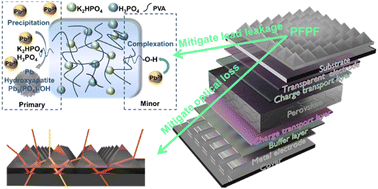Concurrent electrode–electrolyte interfaces engineering via nano-Si3N4 additive for high-rate, high-voltage lithium metal batteries
Energy Environ. Sci., 2025, Advance ArticleDOI: 10.1039/D4EE03862B, Paper Open Access   This article is licensed under a Creative Commons Attribution 3.0 Unported Licence.Jinuk Kim, Dong Gyu Lee, Ju Hyun Lee, Saehun Kim, Cheol-Young Park, Jiyoon Lee, Hyeokjin Kwon, Hannah Cho, Jungyoon Lee, Donghyeok Son, Hee-Tak Kim, Nam-Soon Choi, Tae Kyung Lee, Jinwoo LeeThe nano-Si3N4 additive enables the concurrent engineering of electrode–electrolyte interfaces. It promotes the formation of a bilayer, inorganic-rich SEI via its involvement in SEI formation and Li+ solvation, and a uniform CEI by scavenging HF.To cite this article before page numbers are assigned, use the DOI form of citation above.The content of this RSS Feed (c) The Royal Society of Chemistry

DOI: 10.1039/D4EE03862B, Paper
 Open Access
Open Access This article is licensed under a Creative Commons Attribution 3.0 Unported Licence.
This article is licensed under a Creative Commons Attribution 3.0 Unported Licence.The nano-Si3N4 additive enables the concurrent engineering of electrode–electrolyte interfaces. It promotes the formation of a bilayer, inorganic-rich SEI via its involvement in SEI formation and Li+ solvation, and a uniform CEI by scavenging HF.
To cite this article before page numbers are assigned, use the DOI form of citation above.
The content of this RSS Feed (c) The Royal Society of Chemistry








































































































































































